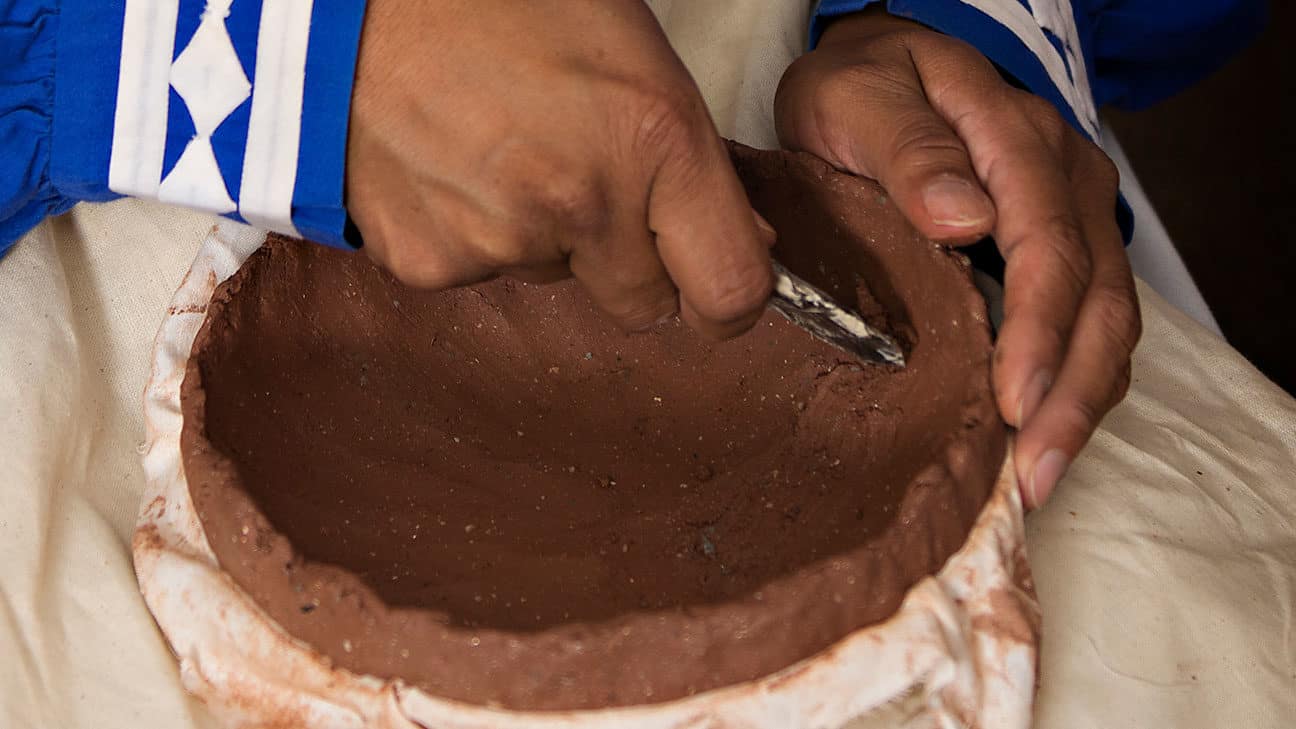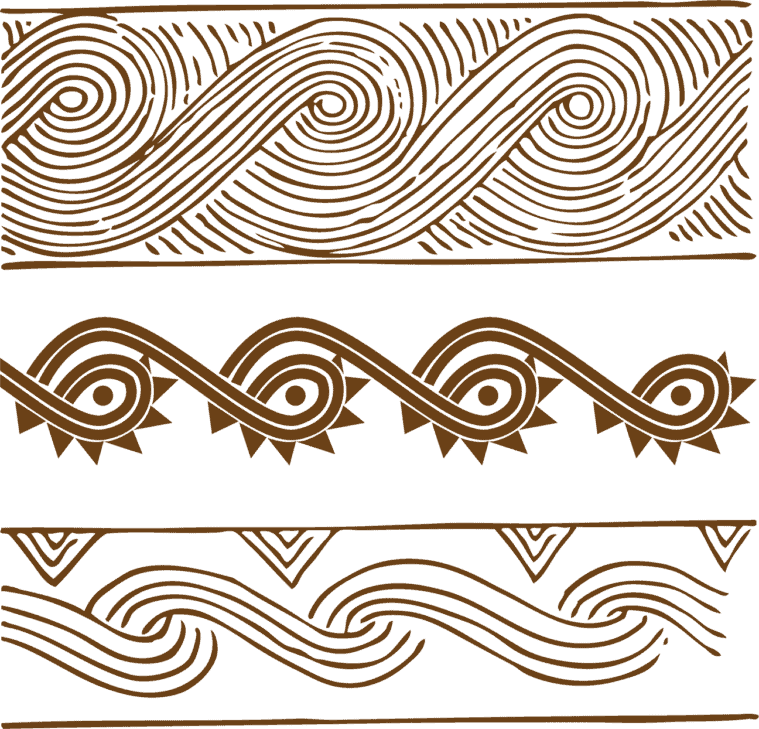Lukfi Nia, the Choctaw word for clay, literally means “fat dirt.” This refers to the sheen of good pottery clay. Traditional Choctaw pottery is made of native clay, dug by hand. Native clays come in many colors, but the most important factors are a clay’s workability and its ability to fire properly in the traditional firing process.
Clay is dug and cleaned of debris before the construction process begins. Pure clays will often crack during drying or firing. Ancient people learned that mixing certain types of small, hard particles called “temper” with the clay can help prevent cracks. From about AD 1050 to 1700, mussel shell was the main type of temper used by Choctaw ancestors. The shells would be burned and pulverized into particles to be mixed with the clay.
Once the clay is prepared, the artist begins to build the form using a combination of molding, coiling, and paddling. Once the vessel begins to take shape, a round, sharp-edged object like a mussel shell or flint knife is used to thin and even out the walls of the vessel. Some types of Choctaw pottery are buffed with leather, burnished with a smooth stone, and decorated with incised or engraved designs.
Traditional firing is done by slowly and evenly heating the dried pottery vessels in a well-controlled bonfire. Different firing temperatures are used for different types of traditional vessels.

Use
Traditional Choctaw pottery comes in two basic types. Shuti are vessels used for cooking. They are just as effective as cast iron for this task. Large pieces of temper help protect these vessels from the thermal stresses of the repeated heating and colling during use. Ampo are vessels used for serving food. They incorporate fine particles of temper, which allows them to be polished and intricately decorated.
Shuti are formed by hand and by using a wooden paddle. They are generally made of heavier clay coils and often have handles or decorated rims. Ampo are formed using a combination of molding (usually into an existing bowl) and coiling. These smaller vessels are low, open forms and sometimes have combed or linear designs. Other forms include bottles with narrow necks and effigy vessels shaped like animals or humans.
Choctaw pottery is intended to be functional. However, many pieces have highly polished surfaces, incised designs or handles that add to the overall look. The temper used in the clay is often considered a visual enhancement as it creates small points of reflective light across the surface of the vessel.
Design and Symbols
Like any art form, the design and symbolism of Choctaw pottery is subjective. Each generation brings new ideas and interpretations to classic designs. Using traditional motifs today creates a unique and special link to the ingenuity and creativity of Choctaws of the past.
The designs below are found on historic and ancestral Choctaw pottery from the homelands of the southeastern United States. Our ancestors brought many of these designs to Oklahoma during the time of Removal, and they are still in use today. The description below offers insight into their symbolism.

Comb or Band Designs
These designs are among the most common found on Choctaw pottery. In ancient times, these decorations are believed to have represented the patterns of nature—movements of the stars, the wind or the sun. These designs are also commonly associated with the step patterns of the Choctaw dances, such as the snake dance.
Today, the associations are much the same as in the past, but each contemporary artist adds their own viewpoints and interpretations. Similar comb and band designs have been found on pottery from ancestral sites in Mississippi, Alabama and Louisiana. The pattern crossed the Trail of Tears and has continued to be used by Oklahoma Choctaw potters.
Renewal
Over a span of 3,500 years, well over 100 generations of Choctaw ancestors made and perfected this artform. It was carried on the Trail of Tears to Oklahoma. Over the next century, it was marginalized through the colonization process, but never went to sleep completely. In 2009, Choctaw Nation began to work to revitalize traditional Choctaw pottery by hosting hundreds of classes and other events in the community. Today, this artform is stronger than it had been in 150 years. Hundreds of living Tribal members have made traditional Choctaw pottery through the classes. With students becoming teachers, it is now regularly seen in art shows, and a few people regularly use it at home to cook and serve family meals.